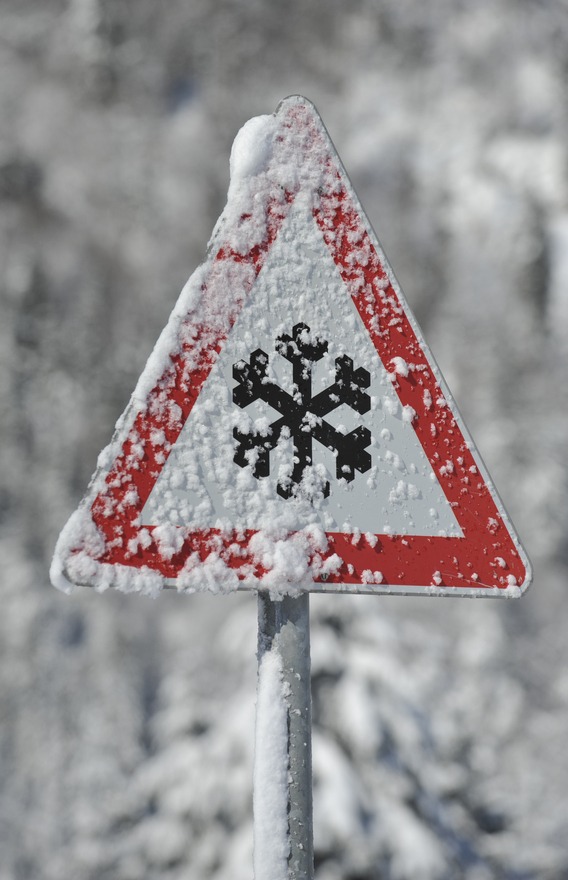Why & How Truck Accident Risks Skyrocket in Adverse Weather
October 27, 2020
The Data Reveals Why Bad Weather Is Bad News for Truckers & Anyone Sharing the Roads with Them
It’s no surprise that poor weather conditions make it riskier to drive. Anyone who’s navigated the roads in adverse weather knows that all too well.
What may be a surprise, however, is seeing that story told through the data—and the lens of the trucking industry. In fact, research shows that bad weather can be a far greater risk for truckers than any other motorist on the road. Here’s why:
- 18-wheelers are more difficult to maneuver than other vehicles: Weighing up to 20 times more than passenger vehicles, commercial trucks simply need more space to stop and turn. When weather affects visibility and makes the roads slippery, maneuvering heavy commercial trucks is much more difficult.
- Truckers are typically driving for much longer periods: More time on roads that are affected by poor weather conditions means more exposure to accident risks. And those risks can persist even after a weather event is over, with issues like icy roads and poor visibility lingering even after a storm has passed.
- Truckers have less discretion in choosing when they have to drive: Unlike passenger vehicle drivers who may be able to choose whether or when they are on the roads, truckers operate on a schedule. That can mean that they are not able to avoid trips during storms and other bad weather because a delivery has to be made.
5 Ways Poor Weather Increases Truck Accident Risks
When truckers drive in adverse weather, here are the specific risks they can face and how these risks can impair their ability to safely operate 18-wheelers. The degree to which each contributes to truck accidents is highlighted, along with the latest data from the Federal Motor Carrier Safety Administration (FMCSA) and findings from the Federal Highway Administration (FHWA).
1. Wet pavement
With rain, sleet, and other weather events comes wet pavement, slippery surfaces, and far less traction. That increases the risks of hydroplaning and losing control of vehicles. In fact:
- Wet pavement can double the stopping distances needed for 18-wheelers.
- At least 60% of all fatal wrecks attributed to adverse weather are caused by wet pavement.
2. Impaired visibility
Fog, snow, heavy rains, and more can reduce visibility for any motorist on the road. That makes it difficult or impossible to see critical cues, like brake lights, traffic signals, and road signs. Ultimately, that can mean that:
- Low visibility conditions tend to increase the risk of human error, like judgment and perception errors.
- Multi-vehicle accidents are far more likely to occur in low visibility conditions, especially during fog events.
- Truck accidents in poor visibility conditions are more likely to be fatal, contributing to about 1 in every 8 deadly wrecks.
3. Frozen precipitation
Roads can quickly glaze over with frozen precipitation. While icy roads amplify the risks that come with wet pavement (by reducing traction and increasing the risk of hydroplaning), frozen precipitation presents another problem—it stresses essential vehicle components, like tires, defrosters, and exhaust systems.
Effectively, that can mean both the roads and the truck itself make it more difficult for drivers to maintain safe control of 18-wheelers whenever there’s frozen precipitation.
4. High winds
Winds exceeding 25 miles per hour (mi/h) can affect vehicle stability, increasing the risk of rollovers. These risks are especially high for:
- High-profile trucks
- Empty or semi-loaded trucks
- Trucks driving in exposed areas, like prairies
5. Extreme temperatures
Extreme hot and cold weather can affect several aspects of the driving experience, including the roads, vehicles, and even drivers. In fact, while both extreme heat and cold can make roads slippery while putting extra strain on truck equipment, excessive heat can also increase negative responses in motorists. This includes:
- Driver aggression
- Driver fatigue
- Slower response times
- Reduced alertness and mental performance
10 Ways to Reduce Truck Accident Risks in Bad Weather
No one can predict or change the weather. But here’s what truck drivers can do if bad weather threatens their next trip or if they’re ever ambushed by a storm while they’re on the roads:
- Keep an eye on weather news and changes.
- Make sure the truck is in good shape before hitting the road.
- Share the chosen route and estimated time of arrival.
- Know the options for alternate routes.
- Don’t let your fuel tank run low.
- Slow it down, way down, while driving.
- Drive defensively, and avoid driving through pooling water whenever possible.
- Avoid stopping near trees and power lines.
- Keep an emergency kit in the truck in case a breakdown leaves you stranded in a storm.
- Trust your gut.
